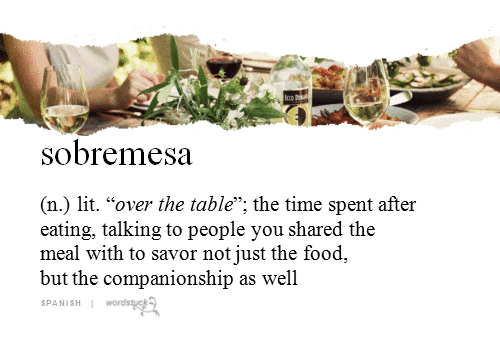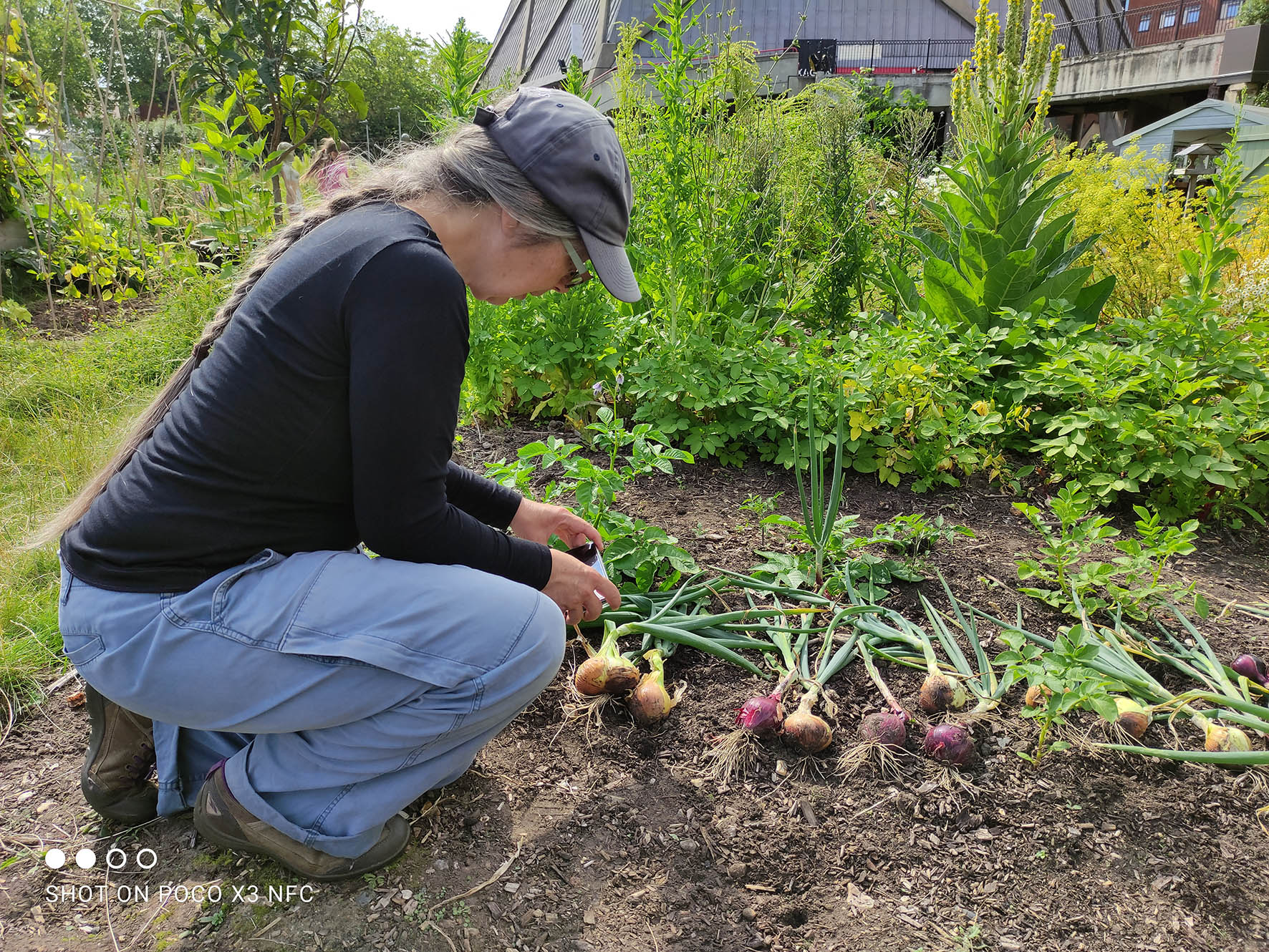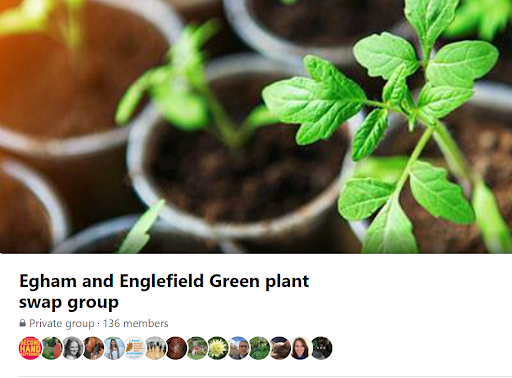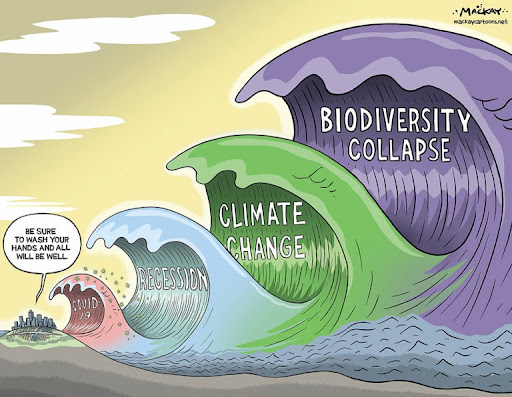The connection between food and storytelling
| Site: | OpenLearn Create |
| Course: | Grassroots Visual Storytelling |
| Book: | The connection between food and storytelling |
| Printed by: | Guest user |
| Date: | Friday, 10 May 2024, 11:07 PM |
1. The connection between food and storytelling
In Spanish, there is a word called ‘sobremesa’ which describes the moment when you sit together after having finished a good meal, when the plates are empty and you are feeling full, happy and content, sharing stories with each other.

We can probably all remember some moments like this, where we feel warm, safe and connected with the other people around us and can simply relax and enjoy this moment and connect with others. For some, those memories might be tied to the cultural importance of food, for example in religious celebrations like Ramadan, Christmas, Passover and Diwali. In moments like these and others, stories can bring meaning to our lives. They can reaffirm and validate our perspectives and convey our values and emotions to others, thereby connecting us more to our inner selves and to others.
Sharing food or talking about food (its origins, how we prepare the dish, its taste…) is one way that makes conversations and the stories we share personal and emotionally engaging. Talking about food connects us to our own individual felt experience of the world and can bring abstract topics down to concrete examples. Our food can be at the centre of the stories we tell each other given the cultural importance of food. As expressed by Nicholas Williams: “Food is who we are, where we come from, how we live, what we believe, and who we will become. Our biographies are condensed into dishes and bites, like memories garnishing our stories. Through the foods we consume and the foods we make–and don’t–we stake claims in our identities and stories, as if announcing to the world, “this is me and this is what I eat.” (Williams, 2017, Telling Stories Through Food, URL: https://thinkingfood.org/food/telling-stories-through-food/ Accessed: 06/09/2021)
Optional Activity (15 min): Are we in need of new stories around food?
Current industrial food systems might be limiting the ways we talk about food. Many argue that we've actually grown disconnected with food (through processes of mechanised mass production and processing, commodification, etc. ).
- What kind of stories are being promoted through the current industrial food system?
- What different stories do community food growing initiatives generate?
Write down your reflections in your learning journal.
2. The transformative power of storytelling
Stories also have a transformative power to allow others to see the world in a different way than they would if they just experienced the world on their own. There is no such thing as true and objective stories. Rather, stories are an entry point for others to understand a different experience of the world. They are subjective, emotionally charged and often very performative.

Storytelling is nonetheless a powerful tool, because it can help to make hidden experiences visible. There are so many choices one takes when telling a story - what to include and what to omit? Who’s the hero and who is the victim? Who tells the story? This always makes certain events and aspects visible, while overlooking others. Historically, there are many examples of how storytelling in this way has contributed to the further marginalisation of certain communities and has perpetuated harmful stereotypes. For example, think about the way Indigenous communities are usually portrayed in Wild West stories or the way in which many stories about ‘The American Dream’ silence the struggles of structural racism and inequality faced by Black Americans. However, storytelling can also be a powerful tool for marginalised groups and communities to highlight their perspectives, struggles and realities. And again, as expressed by Nicholas Williams, thinking about food can help to make these expressions very concrete, “because talking about food easily brings us into the realm of personal story and individual experience, and maybe this helps us put faces and lives to the all-too-often faceless oppression and inequality. Maybe we struggle to articulate these systems of inequalities when they’re abstract and faceless and what food helps us do is localize the experiences and talk about something we can put words and stories to.” (Williams, 2017, Telling Stories Through Food, URL: https://thinkingfood.org/food/telling-stories-through-food/ Accessed: 06/09/2021)
By making sense of and increasing our understanding of challenging experiences, stories can help us to develop and share coping mechanisms, which can inspire others to adopt similar practices. Especially funny stories with humour can be a really powerful tool to make otherwise painful experiences bearable and to turn those hard experiences into moments of connection with others that leave us with positive emotions. Sharing such personal stories also allows community members to form connections and bonds, creating interdependent support networks where people can listen to, hold space for and support each other. We can use storytelling to celebrate the positive achievements in our communities and to develop visions of the future that we want to strive for, imagining flourishing communities and helping us bridge the gap from the present to this future.
3. A social and environmental justice lens for food and storytelling
The Covid pandemic generated an explosion in food related issues and resulting stories. We saw in the news how supermarket shelves were being emptied of certain foods. Conversely, communities came together in novel ways to share seeds and seedlings, reclaim derelict land for food growing and support families that may have otherwise struggled to access fresh vegetables.


https://mackaycartoons.net/2020/03/18/wednesday-march-11-2020/
Yet, as the powerful cartoon by Graeme Mackay suggests, the Covid pandemic is just one of many, potentially greater, crises that humanity faces. Underlying all of these emerging crises are unsustainable and unjust systems i.e. we are confronted with issues of environmental justice. Environmental justice deals explicitly with addressing the unequal distribution of environmental benefits and burdens. Environmental benefits include being surrounded and having easy access to green spaces, natural resources, clean air and water, a tranquil soundscape and infrastructure that enables communities to cope with extreme weather events such as heatwaves, floods and droughts. Environmental burdens include exposure to pollution in the air and water, vulnerability to extreme weather events, excessive noise, and limited to no access to green spaces and natural resources in which, for example, to grow food.
Through an environmental justice lens, it is possible to see how low-income and minority groups are more likely than affluent people to live near toxic industrial facilities and waste disposal sites, live in areas with high levels of air pollution or exposed to flood-risk, and work in hazardous places. Exposure to hazards is aggravated by limited opportunities for these groups to be formally educated on environmental health issues and have access to decent levels of health monitoring and care. The result is that low-income and minority groups have significantly higher levels of disruption, disability, disease, and death resulting from exposure to environmental hazards. For example, Oxfam’s 2020 report, ‘Confronting Carbon Inequality', showed that the richest one percent of the world’s population are responsible for more than twice as much carbon emissions as the poorest half of humanity during the 1995-2015 period. Yet it is the poorest communities and young people who are increasingly experiencing the greatest impact of crises such as climate change.
So, what role can community food growing play in helping us not only confront these emerging crises and our vulnerability, but actually create a thriving and healthy environment? How do we ‘bounce forward’ from crises in ways that address environmental and social challenges?